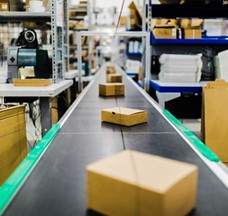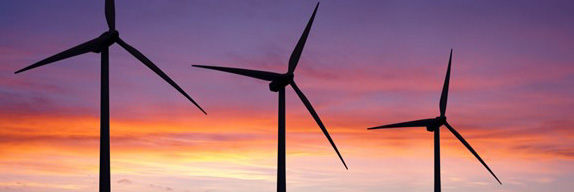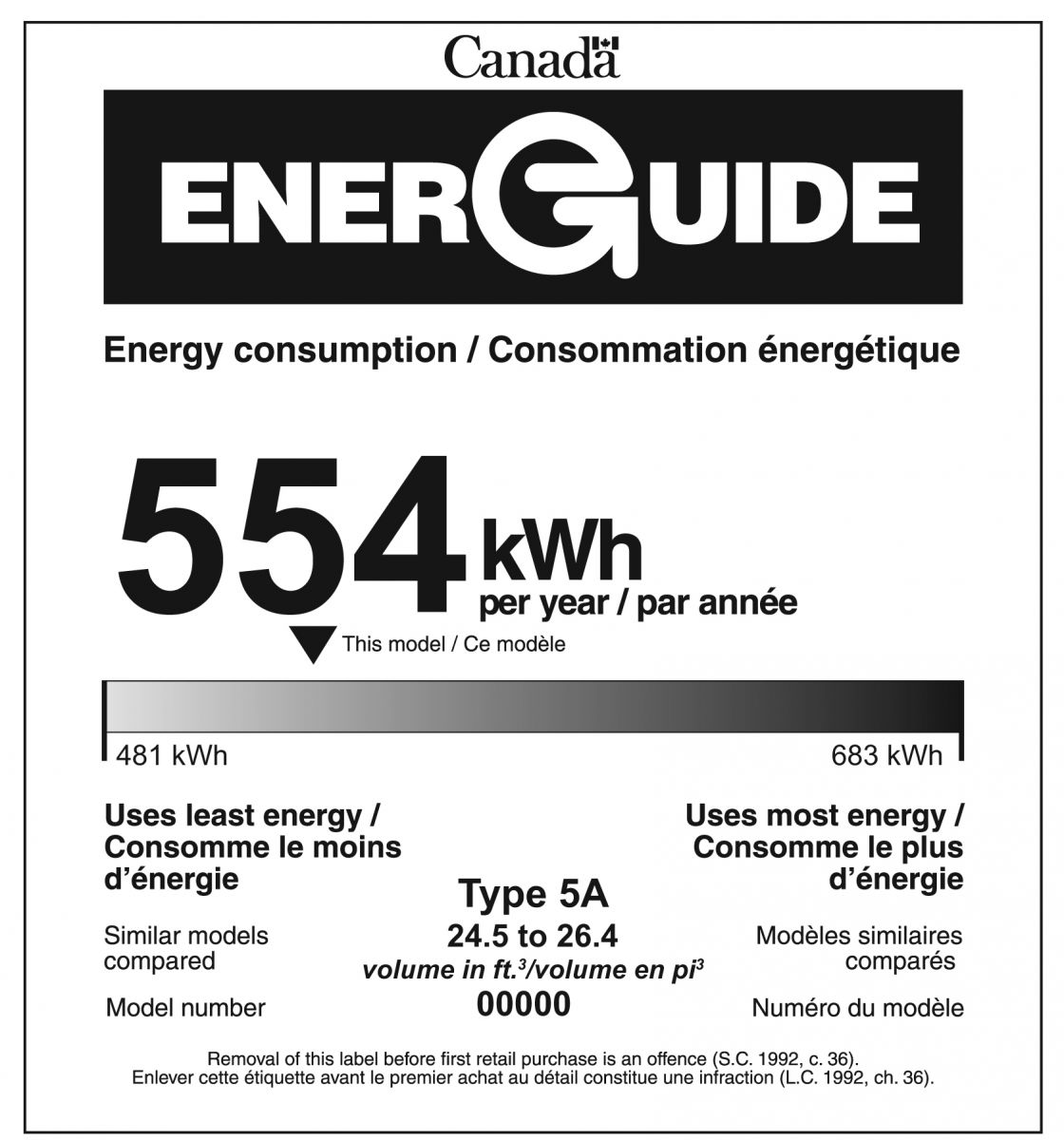Introduction to the Regulations
On this page
- Purpose of the Regulations
- Responsibilities of dealers
- Energy efficiency standards
- Energy efficiency report
- Import reporting
- Verification mark
- Labelling requirements
- Exemptions
- Federal and provincial energy efficiency legislation
- Useful links
Canada’s Energy Efficiency Act (Act) and Energy Efficiency Regulations (the Regulations)
Definition of province
In the Regulations, province means a province of Canada and includes Yukon, the Northwest Territories and Nunavut.
Canada’s Energy Efficiency Act (Act) and Energy Efficiency Regulations (the Regulations) are administered by Natural Resources Canada (NRCan). This introduction to the requirements of the Regulations is general in nature.
Regulations

The Energy Efficiency Regulations apply to dealers who
- import regulated energy-using products into Canada for sale or lease or
- ship regulated energy-using products that are manufactured in one Canadian province or territory to another for sale or lease
A dealer is defined in the Energy Efficiency Act as a person engaged in the business of
- manufacturing energy-using products in Canada
- importing energy-using products into Canada or
- selling or leasing energy-using products obtained directly or indirectly from a person engaged in a business described in a) or b) or an agent thereof
Regulated products
The Energy Efficiency Regulations apply to energy-using products in the following categories:
- household appliances
- water heaters
- heating and air-conditioning equipment
- lighting products
- electronic products
- refrigeration equipment
- other commercial and industrial products
All of these regulated products must meet federal energy efficiency standards in order to be imported into Canada or shipped from one province or territory to another for the purpose of sale or lease. Unless otherwise specified, the Regulations continue to apply to these products if they are incorporated into a larger unit or machine, even when that unit or machine is an unregulated product.
Responsibilities of dealers
Dealers are responsible for ensuring that each model of a regulated product they import into Canada for sale or lease, or ship between provinces and territories, meets the energy efficiency standard set out in the Regulations. Depending on the product, dealers may also be responsible for ensuring that an EnerGuide label, a lighting product label or walk-in refrigeration nameplate is affixed to each unit. As well, all energy-using products must carry an energy efficiency verification mark.
Section 5 of the Act requires that a dealer importing any of the regulated energy-using products or transporting them between provinces or territories submit an energy efficiency report to Natural Resources Canada, unless a report has already been submitted for that model of product. Furthermore, the Regulations require that the energy efficiency report be submitted before the product is imported into Canada or shipped between provinces or territories.
If the product is imported, additional import information summarized under import reporting must be included in a customs release document at the time of importation.
-
In summary, the dealer must
- ensure the product meets the energy efficiency standard specified in the Regulations
- ensure an energy efficiency report has been filed with NRCan
- provide the necessary import information to Canada Border Services Agency, when importing products
- ensure the product bears an energy efficiency verification mark
- ensure an EnerGuide label, lighting product label or nameplate is affixed to the product (if prescribed by the Regulations)
Energy efficiency standards
The prescribed energy efficiency standard for each regulated product is set out in the energy-using product specific sections of the Regulations.
For each of the regulated products, NRCan has individual product pages that contain the following:
- the definition of each product covered by the Regulations
- the standard that must be used to test the product's energy efficiency to ensure that it complies with the minimum requirements of the Regulations
- the date by which the product must meet the prescribed energy efficiency standard (compliance date)
- the product specific information that must be reported in the energy efficiency report and a link to the energy efficiency report template
- information on whether an EnerGuide or lighting product label or a nameplate is required
- the availability of a searchable product list of compliant models
Energy efficiency report
Energy performance information provided in the energy efficiency report may be generated by a mathematical model that, by means of an engineering or statistical analysis or a computer simulation or model, emulates the manner in which the information is collected under the identified testing standard.
Before shipping an energy-using product between provinces or territories, or importing it, the dealer must ensure that an energy efficiency report has been filed with Natural Resources Canada.
An energy efficiency report must be submitted only when a product model is not already listed in NRCan's database.
Section 5 of the Regulations requires that an energy efficiency report be sent to Natural Resources Canada before an energy-using product is imported into Canada or shipped between provinces or territories. The report describes the energy-using product and provides information on its energy efficiency.
The energy efficiency report should include the following data:
- name of product
- brand name
- model number
- manufacturer
- name of the certification body or province or territory that carried out the product energy performance verification and authorized the verification mark that will be put on the productFootnote 1
- whether a mathematical model was used to generate any of the product specific information required below
- specific information about the energy efficiency and energy-use characteristics of the product as listed on the individual regulated product pages
Filing energy efficiency report
A dealer must file an energy efficiency report with Natural Resources Canada only when a product model is not already listed in NRCan's database. Dealers can check with NRCan to find out if an energy-using product is already listed.
Products that are included in NRCan's searchable product list of compliant models can be imported into Canada and shipped between provinces or territories, provided no changes have been made to the product that affect its energy efficiency. If a product is not yet listed with NRCan, the dealer must submit a report for the product before importing it or shipping it between provinces or territories.
Submitting the report to Natural Resources Canada
The energy efficiency report templates are available electronically (Excel spreadsheet) and can be submitted to Natural Resources Canada via email. Reports may also be submitted in hard copy by post or fax or on diskette by post. A dealer or manufacturer can also authorize the certification body associated with the energy efficiency verification/certification file of the product to submit the information. Today more and more certification bodies are submitting energy efficiency reports as part of their client service. This eliminates the need for the dealer or manufacturer to provide proof of certification with each submittal and typically facilitates data processing and listing.
Natural Resources Canada reviews the report
NRCan checks the information in an energy efficiency report to make sure that the product meets the prescribed energy efficiency standard. If it does, the product model is added to NRCan's searchable product list of models.
If a product does not meet the prescribed energy efficiency level, NRCan will contact the dealer to correct the situation before the first importation or shipment of the product. NRCan will also request information from dealers who do not file the required energy efficiency reports, or who file incomplete reports.
Canada Border Services Agency (CBSA) regularly sends information about importations of regulated products to NRCan. This information is cross-matched with information in the database to determine compliance with the Regulations.
NRCan can instruct customs officials to stop the importation of a product that does not meet the prescribed energy efficiency standard.
Import reporting
A dealer who imports a regulated energy-using product into Canada must, at the time of release, include specific information regarding the product, as well as the purpose of its importation on the customs release document.

Only if incorporated into another product are the following energy-using products exempt from providing this information:
- battery chargers
- external power supplies
- fluorescent lamp ballasts
- electric motors
- small electric motors
Information that must be on the customs release document
A dealer who is importing a regulated energy-using product into Canada must include the following information on the customs release document:
- name of product (refer to the list of energy-using products)
- model number
- brand name if any
- address of the dealer who is importing the product
- purpose for which the product is being imported
- for sale or lease in Canada without modification
- for sale or lease in Canada after being modified to comply with the prescribed energy efficiency standard or
- for use as a component in a product being exported from Canada
Incomplete documents
If the customs release document is not complete or if the product does not meet energy efficiency standards, the customs officer may refuse to allow the product to clear customs.
The customs release document must be submitted electronically to CBSA (Canada Border Services Agency). Dealers must always include the required information on the customs release document, regardless of when the product was manufactured.
Energy efficiency verification mark
Regulated energy-using products imported into Canada or shipped between provinces or territories must bear an energy efficiency verification mark from a certification body accredited for energy efficiency verification/certification by the Standards Council of Canada. There is an exemption for CFL (compact fluorescent lamps) and an alternative for external power supplies as per section 4 of the Regulations.
Verification mark
An energy efficiency verification mark indicates that the energy performance of the product has been verified. It is not a safety certification mark. It is a certification mark that is authorized for use by the certification body and signals the product’s compliance with Canada’s energy efficiency standard (if applicable) and their verification of the energy performance information.
The certification body must be accredited by the Standards Council of Canada to operate an energy efficiency certification program for the product. Under some provincial or territorial laws, a province or territory can issue a label that indicates that the product meets the energy efficiency levels of the province or territory. NRCan accepts these labels as verification marks if the provincial or territorial energy efficiency standards are equivalent to, or exceed, the federal standards.
Verification mark fixed to the surface of a product
The verification mark must be affixed to a surface of the product in such a way that it is readily visible. In the case of battery chargers, external power supplies, and some prescribed lamps (CFL, general service lamps, modified spectrum incandescent lamps, general service fluorescent lamps, general service incandescent reflector lamps), the verification mark can be affixed to the exterior of the product's package.
The energy efficiency verification mark can be placed on a product as soon as the product has met the terms of the applicable energy-performance certification program. At the latest, the dealer must ensure that the verification mark is on the product before the product leaves the dealer's possession or, if the product has been passed on to a consignee, before it leaves the consignee's possession.
Certification bodies that are accredited for energy efficiency verification
The Standards Council of Canada has accredited these certification bodies in regard to energy efficiency:
- Air-Conditioning, Heating and Refrigeration Institute
- Bay Area Compliance Laboratories, Corp.
- BEST CB LLC
- Bureau Veritas Consumer Products Services, Inc.
- CSA Group Testing & Certification Inc.
- Eurofins Electrical and Electronic Testing NA, Inc.
- Home Ventilating InstituteI
- IAPMO Ventures, LLC. dba IAPMO EGS
- ICC Evaluation Service, LLC
- International Testing Laboratory Inc.
- Intertek Testing Services NA Inc.
- LabTest Certification Inc.
- Nemko North America Inc.
- NSF International
- North Carolina Advanced Energy Corporation
- OMNI-Test Laboratories Inc.
- PFS Corporation
- QAI Laboratories Ltd.
- QPS Evaluation Services Inc.
- SGS North America, Inc.
- TÜV Rheinland of North America, Inc.
- TÜV SÜD America Inc.
- UL Verification Services Inc.
Be sure to consult the Standards Council of Canada website for any modifications to the list above and to learn more about the certification bodies and their scope of accreditation.
Labelling requirements
The Act and Regulations require dealers to attach a bilingual English and French label to the following energy-using products:
- clothes dryers
- clothes washers
- integrated clothes washer-dryers
- dishwashers
- electric ranges
- freezers
- refrigerators and combination refrigerator-freezers
- miscellaneous refrigeration products
- room air conditioners
Lighting product label on the packaging as per sections 425 to 429 of the Regulations for:
- general service incandescent reflector lamps: PAR, R, ER, BR and BPAR lamps
- CFL (compact fluorescent lamps)
- general service lamps (common light bulbs) and modified spectrum incandescent lamps
Walk-in refrigeration nameplate on the outside of the product and readily visible prior to assembly as per section 658 of the Regulations for:
- components of walk-in coolers and walk-in freezers
- walk-in door assembly and walk-in panel manufactured on or after June 26, 2017
- walk-in cooler dedicated condensing refrigeration system manufactured on or after January 1, 2020
- walk-in refrigeration system that is manufactured on or after July 10, 2020 including dedicated condensing units in matched refrigeration systems
Labelling protocol
A dealer who imports one of these products or ships it from one Canadian province or territory to another must ensure the product is properly labelled before it leaves the possession of the dealer or the dealer's consignee. Many dealers find it cost-effective to label the appliance or component as part of the production line process at the manufacturing level. The label must remain on the product until it is sold or leased at the retail level.
Exemptions
Under certain circumstances, a dealer importing or shipping energy-using products between provinces or territories can be exempted from submitting an energy efficiency report to Natural Resources Canada and the product can be exempted from meeting the prescribed energy efficiency standard. Exemptions apply if
- A dealer is importing or shipping between provinces or territories an energy-using product that will be modified to meet the energy efficiency standard. In this case, the dealer has 90 days to ensure that the product is modified and meets the energy efficiency standard. Within 120 days after the product was imported or shipped, the dealer must submit an energy efficiency report to NRCan.
- A dealer is importing or shipping between provinces or territories an energy-using product that will be incorporated into another product and then exported from Canada.
- A dealer is importing or shipping between provinces or territories an energy-using product, only to export it from Canada.
Details on the EnerGuide label, the lighting product label and the nameplate for walk-in refrigeration
The EnerGuide label indicates the estimated annual energy consumption of the household appliance in kWh (kilowatt-hours). Room air conditioner labels indicate the CEER (combined energy efficiency ratio) of the model.
The lighting product label on the lamp packaging indicates the light output in lumens, the energy used in watts, and the life of the bulb in hours.
This information allows consumers to compare products and to make choices that will save them both money and energy, and thus encourage the sale and availability of energy efficient products.
The walk-in cooler and walk-in freezer component nameplate identifies the model, date of manufacture, if the component is intended for use in a walk-in cooler, a walk-in freezer or both and if suitable only for indoor use. This information provides a means of verifying that no component error is made upon installation.
For more labelling details:
Federal and provincial energy efficiency legislation
The governments of British Columbia, Manitoba, Ontario, Quebec, New Brunswick, and Nova Scotia also regulate the energy efficiency of energy-using products. In some cases, provincial and territorial regulations may differ from federal requirements or may apply to other types of energy-using equipment. For federally regulated product, see also the energy efficiency regulations by province.
Useful links
Government of Canada energy efficiency legislation and associate information:
Natural Resources Canada
- Regulatory announcements – past, current and upcoming regulations and associated consultations
- Energy efficiency report forms – current version in Excel format
- Importer’s corner – for importers and customs brokers, includes a link to applicable HS Codes
Justice Canada
- Energy Efficiency Act – on the Justice Canada website
- Energy Efficiency Regulations – on the Justice Canada website
This document does not constitute part of the Energy Efficiency Act (Act) or its associated regulations. This document is an administrative document that is intended to facilitate compliance by the regulated party with the Act and its associated regulations. This document is not intended to provide legal advice regarding the interpretation of the Act or its associated regulations. If a regulated party has questions about their legal obligations or responsibilities under the Act or its associated regulations, they should seek the advice of legal counsel.
For guidance regarding dealers’ responsibilities, contact Compliance Operations at: complianceops-opsconformite@nrcan-rncan.gc.ca.
Page details
- Date modified:

